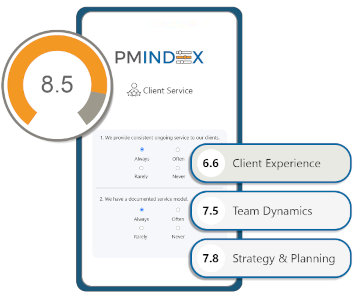Are You Franchise-Ready?

What would happen if you took a month off - starting tomorrow? Would your business spiral into chaos or would it run like a Swiss watch? What would happen if one of your key team members told you that he or she is resigning starting immediately? Would your business be severely disrupted or would you be able to hire a replacement and fast-track him or her to competence?
As strange as it may sound, true business success can only be achieved when you have made yourself obsolete. When the day comes that you don’t need to be present and your business can still be productive, you are on the verge of a breakthrough. Furthermore, when your business practices are documented, you not only liberate your staff to be more efficient but you ensure that you are never at the mercy of maverick talent.
Another one of the biggest benefits of deploying and maintaining an organized and structured business is predictability. The outcomes and results you are striving for become predictable in terms of productivity and the business serves your life instead of the other way around. It also has tremendous impact on your client relationships too. You set expectations for your clients and deliver a consistent client experience that amplifies the trust and confidence they have in you.
When we consult with a financial advisor on a one to one basis, at this point of the strategic analysis we reveal that overall their life is good. They earn a good living and have earned the right to be content. However, deep inside, ambition nags at them. They know they could break through the plateau. But they just can’t seem to take their business higher. And, of course, they have a lifestyle to support and cannot allow their business to go any lower.
Ultimately, they don't want to work harder. Of course, they could work more hours, but the collateral damage to their personal lives would be unacceptable and would take them down the path of diminishing returns. Furthermore, fear of rocking the boat inhibits them. If it isn’t really broken, why try to fix it? In other words, if they attempt to tinker with or re-engineer their current approach, they risk adjustments which might not lead to improvements or could possibly even set things back.
As one advisor put it, “I can’t afford to be right, eventually. My monthly expenses on both business and personal levels require results right now.” This mindset results in people sticking with the status quo and maintaining a business which simply hovers.
So, you can’t work any harder. And you’re not prepared to resign yourself to “this is as good as it gets.” What is the answer?
More often than not, one, two or all of the following three factors must be addressed in order to take your business to the next level, to evolve from survive to thrive.
Mistaking Motion for Action
When we ask a financial advisor, “How are things?” nine times out of ten, the answer will be, “I’m extremely busy.” Our response is always, “Busy doing what?” The Law of Cause and Effect states that your activities will determine your productivity. If you want your productivity to increase, the first place you should look at is the activities you engage in which give you the best return on your investment of time and energy. Think about it. The Pareto Principle states that 80% of your productivity stems from about 20% of your activities. In other words, you make about 80% of your income every day in about an hour. So, what goes into that hour? Talking to and meeting with your favorite clients and the most predisposed prospective clients available to you. All other activities must support these two essential activities.
Unless you are a one-person operation, one of the most obvious ways to increase your capacity to do more of what you really get paid to do is to delegate as many supporting activities as possible.
For many entrepreneurs, managing people and all the accompanying hassles can be a big issue. Many perceive managing people as actually exacerbating the problem because it can be a distraction. Hiring new people adds yet another expense and could potentially upset the chemistry of the staff currently in place.
These concerns can be addressed if you step back and scrutinize your business. Determine whether it is truly built on predictable, sustainable and duplicable systems driven by accountability and consistency. Does everyone on your team know their job description? Do they follow predetermined systems and procedures, or are they left to their own devices?
We have seen many, many entrepreneurs with successful businesses supported by talented people but who unknowingly created self-imposed limitations because, frankly, everyone in the organization flew by the seat of their pants. Time after time, the creation of an Organizational and Structural Chart followed by the refinement of systems outlined within a Procedures Manual has proven to be essential.
Systems Create Success
The Organizational Chart is simply a snapshot of everyone on your team with a brief description of what they do. One sheet of paper is required and, when completed, becomes the cover sheet of the Procedures Manual. Now if you have never done this before you may be wondering, “Is this worth the effort?” Time and time again, when conducting a Business Evaluation Process (a strategic Gap Analysis) for one of our coaching and consulting clients, we have determined that in order to develop a systematized business this is an essential step back in order to take several forward.
The Random House Dictionary defines systems as "a group or combination of things or parts forming a complex or unified whole." Does this sound like your business? Dry as it may be, it fits not only the dictionary definition, but is critical for your success.
Take a good hard look at your operation. Would it continue to function like a Swiss watch if you weren't there all the time? Could you convince us, today, that your enterprise is a true business and not just simply a company that sells things? Have you created something with great value, predictable outcomes and ironclad systems? Could you provide documentation detailing exactly how to operate and run your business right down to the smallest detail?
If you have created a business with true systems, you probably already know the freedom and control it has brought to your business and personal life and your buiness is truly Franchise-Ready. The haphazard approach simply cannot compare.
So where do you start? If you are going to build a business based on systems, the first step is to clearly define each individual’s responsibilities within your organization. You and your team have to sit down and determine who does what and when. On a daily basis, you and your team engage in proactive and reactive activities. Based on the Law of Cause and Effect, all of these activities affect your productivity. You and your team need absolute clarity of who is accountable for each of these activities.
Continued Success!
Contributed by Duncan MacPherson











